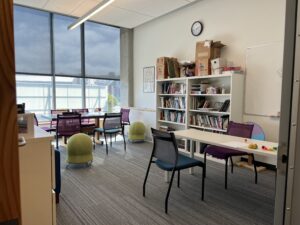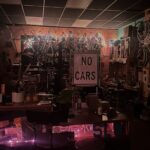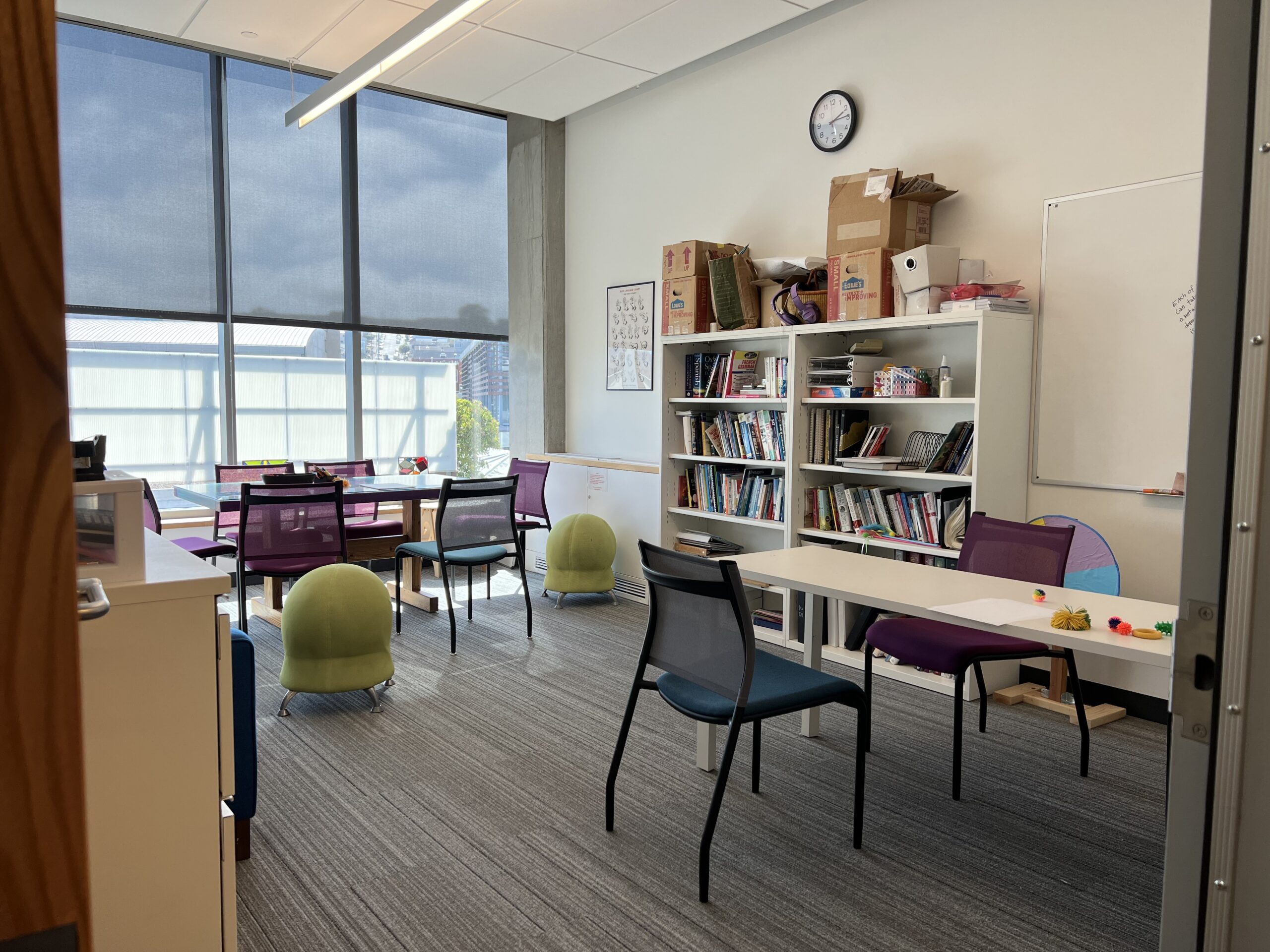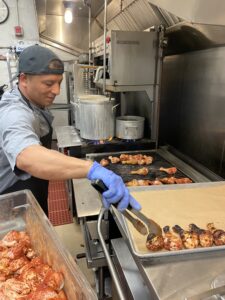The Learning Strategies Center (LSC) is a vital support system for students at Lick-Wilmerding High School. Winifred Montgomery, the Learning Strategies Director, has been constructing the program since 2010 to emphasize metacognition, individualized learning profiles and communal relationship building.
When Montgomery arrived at LWHS in 2010, the LSC consisted of a short list of students with learning accommodations, creating a lot of stigma and shame within the school’s neurodiverse community. Neurodiversity in students was then deemed as a “learning disability,” a label that focused only on the struggles that neurodivergent students face in a fast-paced, academically-rigorous learning environment. “Historically, there’s been a lot of philosophy around neurodiversity that is based on disability…[and] impairment,” Montgomery said.
With support from the LWHS administration, Montgomery chose to rewrite this narrative for neurodiverse students at LWHS. “[We] built the [new LSC] program from the ground up,” Montgomery said. She created an environment that highlights students’ strengths and empowers them to take control of their learning.
The foundation of this empowerment was the concept of metacognition: the ability to understand the way that you learn. Using metacognition, neurodivergent students can discover their learning strengths and weaknesses and use that knowledge to study in unique ways that work best for them. “Understanding yourself gives you agency over your trajectory,” Montgomery said.
When a student is diagnosed with a learning difference, Montgomery and Jaski Kohli, the Interim Learning Strategies Coordinator, work individually with that student to understand their neurodiversity holistically and teach them about the concept of metacognition.
While teachers are able to see each neurodivergent student’s learning plan (a summary of their abilities and accommodations) through Blackbaud, the Learning Strategies team and the individual student collaboratively compose a much more complex document: the learning profile.
This document acts as a letter to the student’s teachers, containing the student’s personal and academic strengths and weaknesses, their academic goals for the year, the student’s specific diagnosis and their accommodations. After creating and finalizing their profile, each student will present it to their teachers in a meeting held in the LSC. Their accommodations are then implemented and easily accessible when it’s time for them to take tests or write in–class essays.
Although the learning profile meetings are originally led by Montgomery in students’ frosh years, they eventually find themselves in control of the sessions as they get older. “Freshman year, Ms. Montgomery leads the meeting, sophomore year, you lead the meeting,” Ivy Kilar ’24, a LSC intern, said. In a neurodivergent student’s junior and senior years, they send the document out to their teachers by themselves.
According to Kilar, giving students more independence when communicating about their neurodiversity with their teachers allows students to learn to advocate for themselves. This lesson has a significant impact on their high school experience and beyond, as neurodiverse students are training themselves to communicate their needs without the help of adults.

The LSC also creates a community where students can feel comfortable in their abilities. “[Neurodiverse students] have a judgment–free zone where we can take tests and get our accommodations,” Eamon Brannigan ’24, an LSC intern, said.
The LSC cultivates an open, welcoming community by hosting events like Neurodiversity Night, an introduction to the LSC to incoming students and an affinity space for neurodivergent students, put together by the interns. “It’s a space for [incoming Frosh]…to learn what the LSC provides for them,” Kilar said.
The LSC also reaches out to the whole LWHS student community to emphasize the importance of how learning strategies can influence how well they learn, both in school and outside of the classroom. Through the LSC’s study hack videos on their website, all students are able to metacognitively understand about the best tools and hacks for studying and test-taking. They will additionally be accessible during the mid-December midterms season, when students may find them most helpful. According to Zainab Ansary ’25, some neurodiverse students at LWHS are finding it challenging to be in the school’s rigorous academic environment while dealing with their learning differences. Alongside their extra effort to stay on top of their workload and advocate for their accommodations for tests and in-class assignments, neurodiverse students also need to handle the stigma and awkwardness surrounding neurodiversity. “I still feel like there’s some sort of alienation towards people [who are] neurodivergent,” Ansary said.
But when Ansary got into contact with Montgomery and was able to be a part of the LSC community, she felt at home. Ansary is excited about conversations that the LSC is starting about neurodiversity in the community.
Many students have similar negative notions of their learning differences, but when they learn about the way their brain works, their perspective shifts. “It’s really cool when you get [an] answer in a completely different way,” Kilar said, reflecting on the value of neurodiversity, a main pillar of diversity. “It’s very underappreciated [that neurodivergent students] have strengths and things [they] excel at,” she said. “This society focuses on their weaknesses…but I think it’s the exact opposite, their differences are strengths…let’s celebrate [them].”






